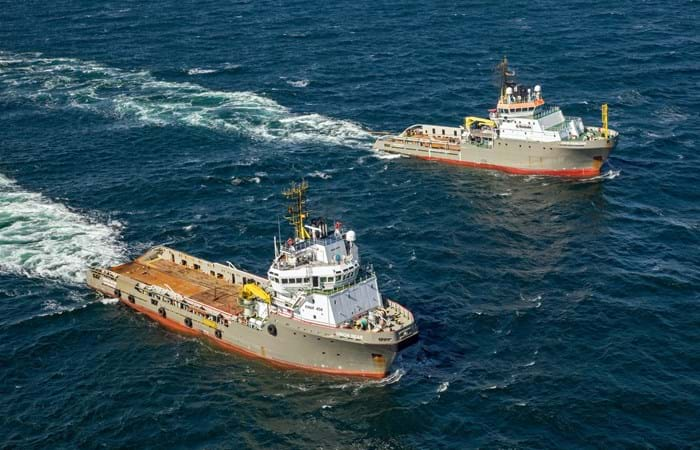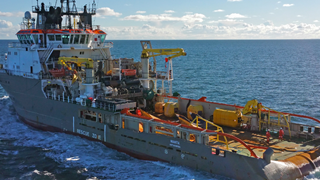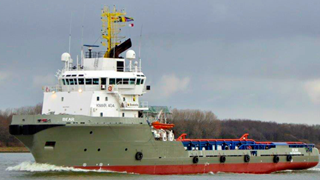Allseas Engineering had been awarded with the contract to support partly with construction of the offshore natural gas transmission system comprising two 48” diameter pipelines from Russia to the Baltic through Germany (NPSP2). The installation of the NSP2 pipeline has been performed by Charterers pipelay vessels: Solitaire, Pioneering Spirit and Audacia.
Boskalis was awarded by Allseas Engineeirng to perform anchor handling assistance and survey and ROV support during the pipelay work conducted by the PLV Audacia. The southern section of the two pipelines was installed by PLV Audacia without utilizing her DP system. This was a requirement from Charterers client and the vessel had therefore been fitted with 10 mooring spread to maintain position during the pipelay operation. The work was performed in German waters from Global KP point 1197 to 1159 – Country KP 17 – 55 in a water depth ranging from 17 to 25 m. This required anchor handlers above 150 Tonnes Bollard Pull which were capable of handling9 x 18mT Stevshark Rex anchors2 x 16mT Stevshark anchorsFurthermore Boskalis provided in-house survey and ROV equipment in order toPerform TDM (Touchdown monitoring) using a pole mounted MBES (multibeam echosounder)Perform TDM with the ROVCheck and confirm anchor catenaries using either MBES or ROV when requested by PLV Audacia. For this scope the 205TBP AHTS Union Manta was outfitted with survey and ROV equipment. Also dedicated shore support in Mukran was provided to ensure an efficient operation. With all Boskalis’ projects safety is an essential part. The project was executed with a good safety performance of the marine crew and project management. The marine spread was manned to perform 24/7 anchor handling and survey duties. Also dedicated shore support in Mukran was provided to ensure a efficient operation. The marine spread exceeded CLIENT’s expectations while maintaining the highest safety and sustainability standards, Boskalis through combining various inhouse disciplines and due to its diverse and large fleet size was able to provide an all round solution as requested by our client.



